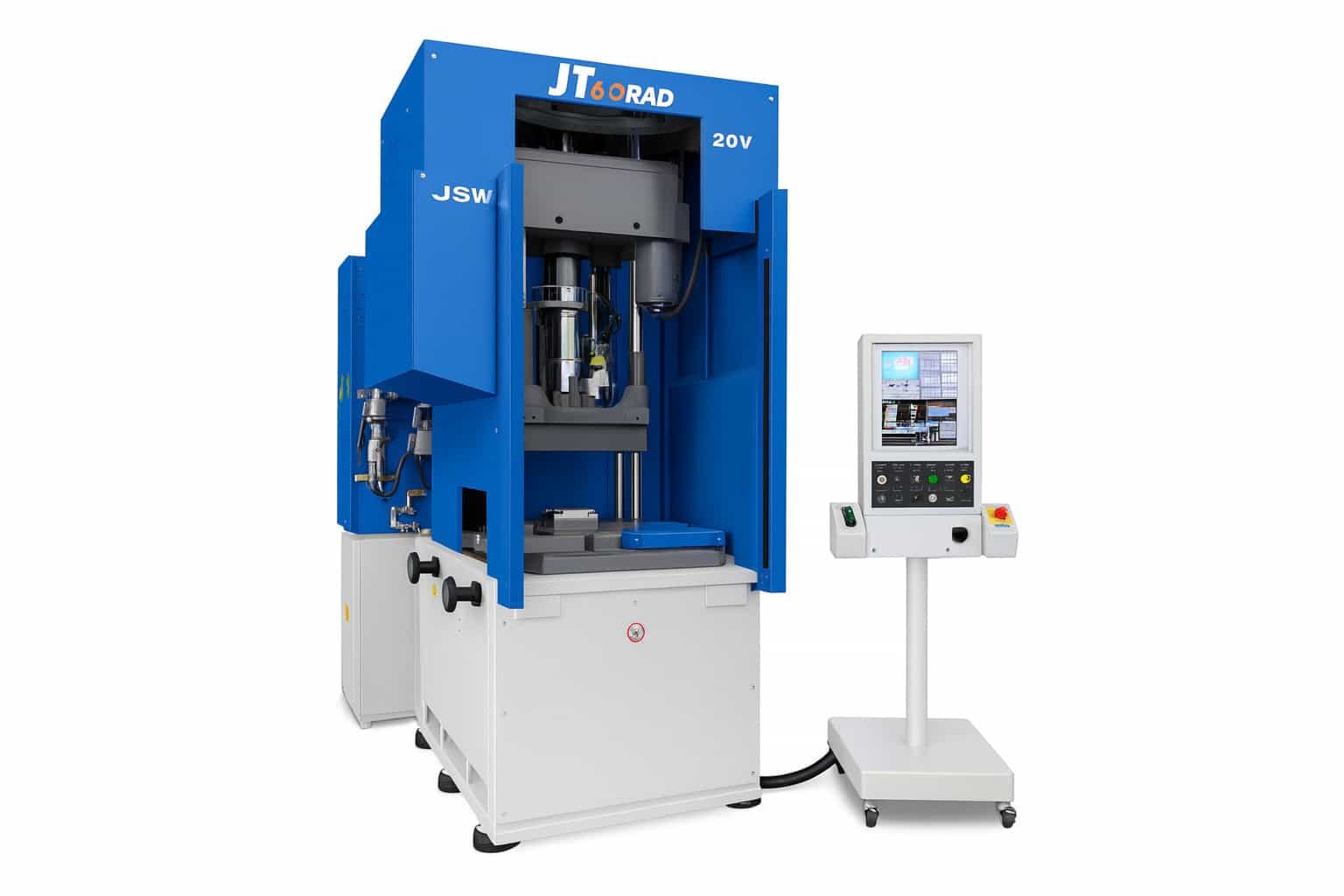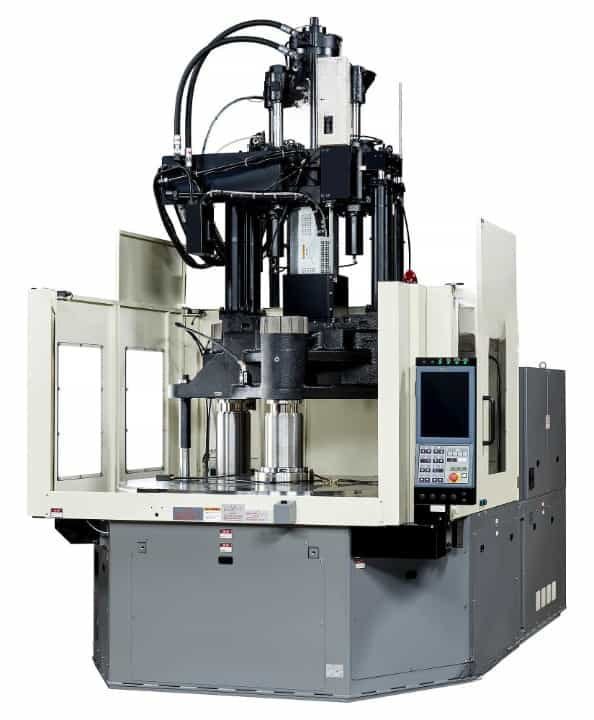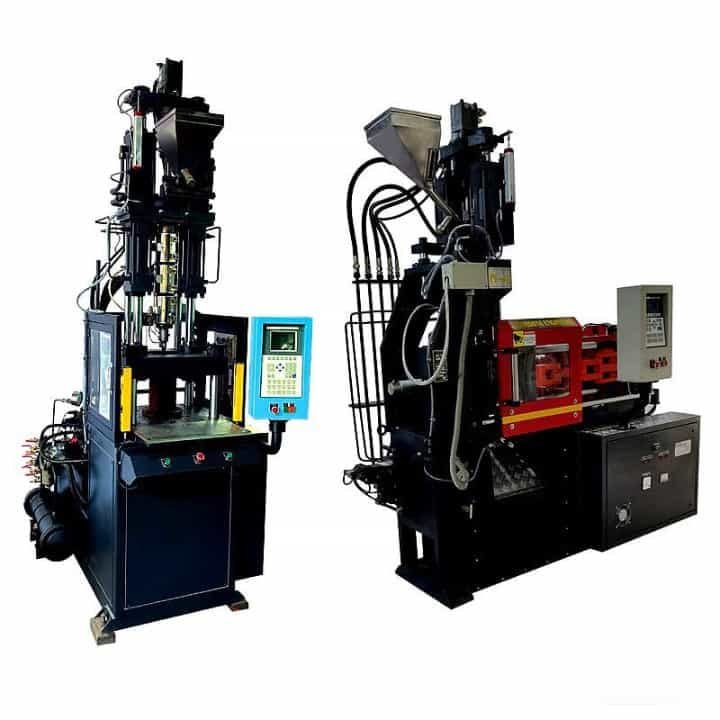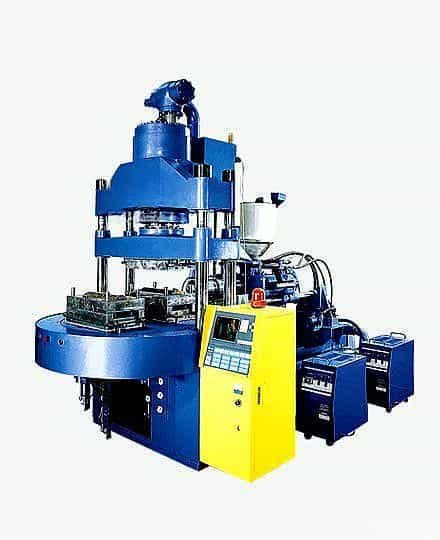A vertical injection molding machine moves its mold halves up and down. The injection unit sits on top of the machine. This setup uses gravity to help fill the mold. Gravity also helps keep inserts in place.
The vertical injection molding process is special because it makes insert and overmolding easier. This is helpful for making parts like connectors or sensors in cars and electronics.
These machines save space. They also help make detailed and tricky designs by using gravity to help.
Key Takeaways
Vertical injection molding machines use gravity to keep inserts in place. This makes insert molding and overmolding easier and more correct. These machines save space in the factory.
They let workers change molds quickly. This helps workers make small and detailed parts fast. Automation and rotary tables help make things faster and safer. Robots can move inserts and finished parts during molding.
All-electric vertical machines use less energy. They give better control. This makes the process cleaner and more exact. Vertical machines are best for small and precise parts. They are used in medical, electronics, and car industries. They work well when there is not much space.
How Vertical Injection Molding Machine Works
A vertical injection molding machine works by injecting molten plastic into a mold vertically. The machine’s design allows for better precision in molding complex shapes, making it ideal for small parts and inserts.
Vertical Clamping Mechanism
A vertical injection molding machine has a special clamping system. This system moves the mold halves up and down. Horizontal machines move molds from side to side. The clamping steps are simple:
The mold transfer part goes to the top.
The operator puts the mold on the moving plate.
The fixed plate is loosened, and the upper mold lines up and tightens.
The lower mold is attached to the moving plate.
The operator checks the mold by moving the transfer part.
During injection, a solenoid valve lifts the transfer part and closes the mold.
The injection plunger pushes plastic into the barrel.
After injection, the plunger pulls back, and the solenoid valve lowers the transfer part to open the mold.
The table below shows how vertical and horizontal clamping are different:
Feature | Vertical Clamping Mechanism | Horizontal Clamping Mechanism |
|---|---|---|
Mold Movement | Up and down | Side to side |
Injection Location | Top, gravity assists filling | Side, no gravity assistance |
Clamping Force | Lower pressure needed | Higher clamping force required |
Automation & Productivity | Easier integration with automation, rotary tables possible | Typically single mold, parts fall out after ejection |
Insert Molding | Gravity holds inserts in place | Less suited for insert molding |
Part Removal | Manual or robotic removal | Parts fall out automatically |
Injection Process
The vertical injection molding process uses clear steps to make plastic parts. These steps are:
Clamping: The machine presses the two mold halves together.
Injection: Plastic pellets melt and fill the mold.
Dwelling: The machine keeps pressure to fill the mold.
Cooling: The plastic cools and gets hard in the mold.
Mold Opening: The mold halves move apart.
Ejection: The finished part comes out, often by hand or robot.
This process lets you put inserts, like metal pieces, in the mold before injection. The vertical injection molding machine makes adding inserts easier and keeps them in place. Automation is important in new machines. Robotic arms and cobots help remove parts, check them, and do extra steps. These systems make work safer, faster, and better. All-electric machines make the process even better. Servo motors and smart controllers give exact control over injection, heat, and pressure. These features help make parts more accurate, repeatable, and save energy.
Role of Gravity
Gravity is very important in vertical injection molding. It helps keep the top mold half steady, so less force is needed. Gravity also holds inserts, like metal parts, in the mold. This stops them from moving during injection and makes better products. Gravity helps vertical injection molding by:
Keeping inserts in the right spot.
Holding inserts tight before and during injection.
Reducing mistakes and making parts stronger.
Helping both hand and robot insert placement.
Working well for tricky parts with inserts and small spaces.
Making it easier for operators to work.
Tip: Gravity makes vertical injection molding great for car, electronics, and medical parts, where insert placement and part quality are very important.
What are Vertical Injection Molding Machine Features
Vertical injection molding machines offer efficient space utilization and ease of insert molding. Key features include a vertical clamping unit, compact design, and enhanced precision.

Machine Configurations
A vertical injection molding machine has different setups. Each setup is good for certain jobs. The table below lists the main types and what they do:
Configuration Type | Description |
|---|---|
Manual Loading | Workers put parts in by hand. The open shape makes it easy to reach and work safely. |
Rotary Table | The machine has a table that spins. It lets people load and unload while molding happens. |
Automated Systems | Robots and smart controls move parts and inserts. These setups can work with little help. |
All-Electric Machines | Servo motors and smart controls make these machines exact and save energy. |
Closing Systems | Different closing systems let users pick what works best. |
Shuttle or Rotary Tables | These tables help with many part sizes and speeds. |
Application Areas | The machine is used for overmolding, electronics, and car parts. |
Good design helps workers stay safe and work faster. Machines with low beds let people work close to the ground. This lowers the chance of falling and makes mold changes quick. The clamping force can be from 30 tons to over 4000 tons. Small machines make tiny parts. Big machines make heavy or tricky products.
Rotary Table and Automation
Rotary tables help vertical injection molding work better. These tables let people or robots load inserts while other parts are made. This saves time and cuts down on work costs. Rotary tables also keep workers in one spot, which is safer. The design is good for tricky insert molding and works well with automation.
Rotary tables can have two or three mold spots.
People or robots can load and unload at once.
The system is good for products with many parts and delicate inserts.
Servo motors in rotary tables can lower energy use by up to 70%.
Automation gives even more good things. Robots can take out parts, check if they are good, and move inserts. Automated setups make cycles faster and parts more alike. They also mean less need for skilled hand work.
All-Electric Systems
All-electric vertical injection molding machines use servo motors, not hydraulic pumps. These motors only use power when needed. This design uses 30% to 70% less energy than hydraulic machines. All-electric machines also stay cooler, so they need less cooling. They do not leak oil or lose pressure, so they are cleaner and easier to care for.
Note: All-electric systems help factories save money and are better for the environment. They also give better control over speed, pressure, and part quality.
What are the Advantages and Disadvantages of Vertical Injection Molding Machine
Vertical injection molding machines offer several advantages, including space efficiency and precise control over part production. However, they also come with disadvantages such as higher operational costs and complexity in handling.

Advantages
Vertical injection molding machines give many good things to manufacturers.
Their small size helps save space in the factory. This is good for companies with little room for machines.
The way the mold opens and closes makes it easier to reach. Workers can change molds quickly and spend less time waiting. This helps them get more work done.
These machines can do many jobs. They work for both single-shot and multi-shot injection.
Vertical machines are great for making small and detailed parts. They make these parts very accurately and the same every time.
It is easy to add rotary tables or automation to these machines. This makes them more useful and lets them fit different jobs.
Note: Vertical injection molding machines often do better than horizontal injection molding machines for insert molding and overmolding. Their design helps them work well, last long, and change for new needs.
Disadvantages
Even though they have many good points, vertical injection molding machines have some problems too.
The molds for these machines cost more than other types. You also have to replace them often, which adds to the cost.
Making parts takes more time because the molds must heat up and cool down. This makes the process slower than with horizontal injection molding.
High pressure can cause problems like dents in tricky plastic parts.
Sometimes, extra material is wasted. Cutting or fixing parts can use up more raw materials.
⚠️ Manufacturers should think about these problems and the good points before picking vertical or horizontal injection molding machines.
Where Can Vertical Injection Molding Machine Be Used?
Vertical injection molding machines are primarily used in applications requiring over-molding, insert molding, and precision molding. They are ideal for producing complex parts with high accuracy and consistency.

Insert and Overmolding
Vertical injection molding machines are very important for insert molding and overmolding. These machines let workers put inserts, like metal or plastic pieces, into the mold before plastic is added around them. The vertical design uses gravity to keep inserts steady. This helps make sure inserts do not move during the process and makes the work more accurate.
Insert molding uses threaded inserts to make strong screw threads in plastic.
Overmolding puts a soft layer on a hard plastic base. This is often used for grips and handles on tools.
Vertical machines help workers place inserts or other parts because the mold opens up and down.
Gravity keeps inserts in the right spot, so there are fewer mistakes.
Workers can take out finished parts more easily, which is good for fragile items.
Rotary tables let more than one mold work at the same time, so more parts are made faster.
Insert molding makes parts stronger, last longer, and carry electricity better.
Overmolding can make things more comfortable, add color, and protect from dust or water.
Tip: Vertical injection molding machines are the best choice for insert and overmolding jobs. Their design helps with hard molding work and makes high-quality products.
Electronics, Medical, Automotive
Vertical injection molding machines are used in many industries that need exact and strong parts. The table below shows how these machines help different fields:
Industry | Examples of Vertical Injection Molding Applications |
|---|---|
Medical | Devices with other materials inside plastic, like sensors with metal, surgical tools, tubes, and cables |
Electronics | Insert molding covers circuit parts with plastic to keep people and parts safe |
Automotive | Parts like filters, car keys, brackets, connectors, and circuits that must be tough and meet high standards |
Medical companies use vertical machines to make small, detailed parts like catheters and sensors. These machines are good for making tiny things and are very exact. In electronics, vertical injection molding keeps delicate circuits safe by sealing them in plastic. The automotive industry uses these machines for parts that must last a long time and follow strict safety rules, like connectors and brackets.
Vertical injection molding machines help companies make tricky, high-quality parts for many important industries.
What’s the Difference Between Vertical and Horizontal Machines?
Vertical machines have a vertically oriented spindle, making them ideal for precision tasks like milling and drilling. In contrast, horizontal machines feature a horizontally oriented spindle, offering better stability for heavy-duty cutting and material removal.

Key Differences
Vertical injection molding and horizontal injection molding are different. Vertical machines move the mold up and down. Horizontal machines move the mold from side to side. This changes how each machine fits in a factory. It also affects what parts they make best.
The table below shows the main differences:
Criteria | Vertical Injection Molding Machine | Horizontal Injection Molding Machine |
|---|---|---|
Space Requirements | Compact footprint, ideal for limited floor space | Larger footprint, requires more floor space |
Part Size & Complexity | Best for small, simple, precise parts (e.g., O-rings, washers) | Best for large, complex parts |
Automation Integration | Easier due to smaller size and vertical setup | Suitable for large-scale automation |
Material Waste & Energy | Lower material waste and energy consumption | Higher material waste and energy use |
Production Volume | Suitable for small to medium-sized production runs | Better for high-volume production |
Typical Applications | Small precision parts, medical seals, electronics | Automotive parts, large industrial components |
Overmolding | Traditionally preferred due to gravity aiding adhesion | Emerging horizontal designs challenge this preference |
Horizontal injection molding machines can use bigger molds. They also use more force to keep the mold closed. The horizontal process is good for making many big parts fast. Vertical machines are better for insert molding and overmolding. Gravity helps keep inserts in place in vertical machines.
When to Choose Vertical
Picking between vertical and horizontal injection molding depends on your needs. Vertical machines are best for small, exact parts and insert molding. They are good for factories with little space. The vertical design makes it easy to add robots. These machines waste less material and use less energy. This is helpful when materials cost a lot.
Horizontal injection molding is best for making lots of big, tricky parts. The horizontal process is fast and can run all the time. Factories with lots of space often use horizontal machines for car and industrial parts.
Tip: Pick a vertical injection molding machine for small jobs, insert molding, or if you do not have much space. Pick horizontal injection molding for making many big parts quickly.
Vertical injection molding machines are known for being exact, flexible, and saving space. They have many good points:
They make small and tricky parts very accurately every time.
They use less material and energy, which is better for the planet.
It is simple to add robots and smart controls to these machines.
They can use different clamping forces for many kinds of jobs.
These machines work great for making car, electronics, and medical parts. Factories with little room or that need insert molding pick vertical machines for good quality and fast work.
FAQ
What is the main benefit of a vertical injection molding machine?
A vertical injection molding machine uses gravity to hold inserts in place. This helps make strong and detailed parts. It is very useful for insert molding and overmolding.
Tip: Vertical machines are good for small parts. They also save space in factories.
Can vertical injection molding machines use automation?
Yes, many vertical machines can work with robots and rotary tables. Automation helps put inserts in, take finished parts out, and check if parts are good. This makes work faster and safer.
Are vertical injection molding machines energy efficient?
All-electric vertical machines use servo motors. These motors only work when needed. This saves energy and lowers costs. Factories stay cleaner because there is no oil.
What types of products use vertical injection molding?
Manufacturers use vertical machines for medical devices, electronics, and car parts. These machines make things like connectors, sensors, and tools that need strong inserts or special shapes.
How does a rotary table help in vertical injection molding?
A rotary table lets workers or robots put inserts in while the machine makes other parts. This makes production faster and keeps the process safe and neat.

